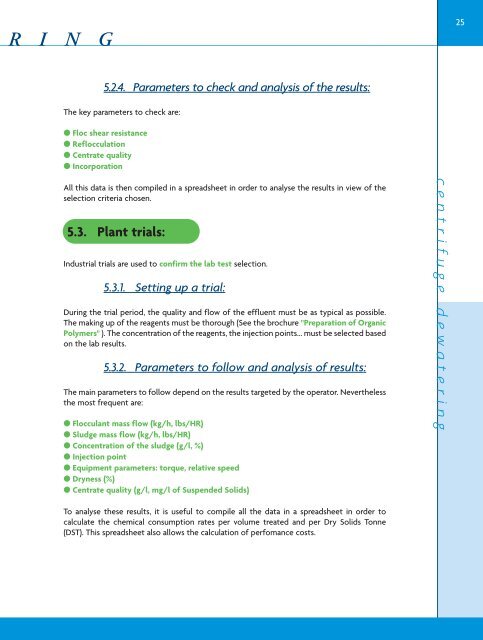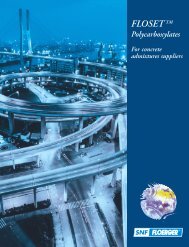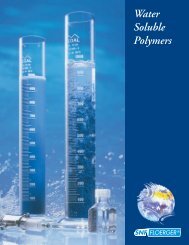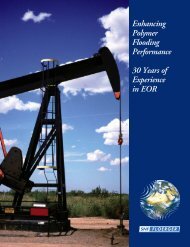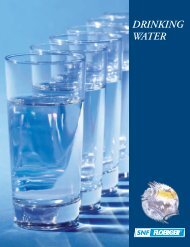SLUDGE DEWATERING - SNF Group
SLUDGE DEWATERING - SNF Group
SLUDGE DEWATERING - SNF Group
You also want an ePaper? Increase the reach of your titles
YUMPU automatically turns print PDFs into web optimized ePapers that Google loves.
R I N G<br />
5.2.4. Parameters to check and analysis of the results:<br />
The key parameters to check are:<br />
● Floc shear resistance<br />
● Reflocculation<br />
● Centrate quality<br />
● Incorporation<br />
All this data is then compiled in a spreadsheet in order to analyse the results in view of the<br />
selection criteria chosen.<br />
5.3. Plant trials:<br />
Industrial trials are used to confirm the lab test selection.<br />
5.3.1. Setting up a trial:<br />
During the trial period, the quality and flow of the effluent must be as typical as possible.<br />
The making up of the reagents must be thorough (See the brochure "Preparation of Organic<br />
Polymers" ). The concentration of the reagents, the injection points… must be selected based<br />
on the lab results.<br />
5.3.2. Parameters to follow and analysis of results:<br />
The main parameters to follow depend on the results targeted by the operator. Nevertheless<br />
the most frequent are:<br />
● Flocculant mass flow (kg/h, lbs/HR)<br />
● Sludge mass flow (kg/h, lbs/HR)<br />
● Concentration of the sludge (g/l, %)<br />
● Injection point<br />
● Equipment parameters: torque, relative speed<br />
● Dryness (%)<br />
● Centrate quality (g/l, mg/l of Suspended Solids)<br />
To analyse these results, it is useful to compile all the data in a spreadsheet in order to<br />
calculate the chemical consumption rates per volume treated and per Dry Solids Tonne<br />
(DST). This spreadsheet also allows the calculation of perfomance costs.<br />
centrifuge dewatering<br />
25


